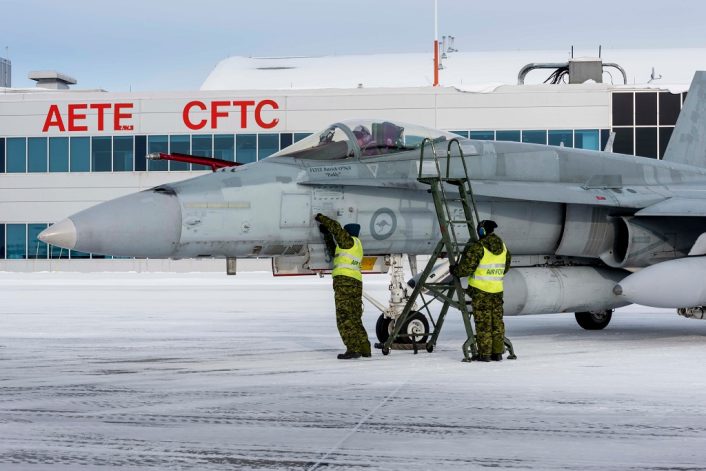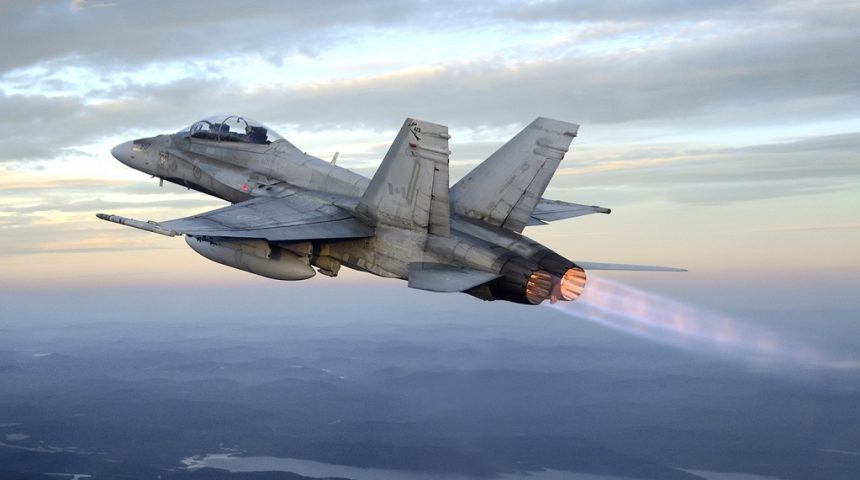The proposal based on the Super Hornet reportedly did not meet the requirements set by the government, leaving only two contenders for the new fighter aircraft.
Boeing might be out from the Future Fighter Capability Project (FFCP) that aims to replace the Royal Canadian Air Force’s fleet of legacy CF-188 Hornets (local designation of the F/A-18), as Canada’s federal government reportedly said that the replacement proposal based on the F/A-18E/F Super Hornet did not meet the federal government’s requirements. The Canadian Press first reported the news saying that, according to three sources from industry and government who spoke on condition of anonymity, the message was delivered to the U.S. company on Wednesday.
According to the same sources, Lockheed Martin and Saab each received a message stating that their proposals met all the requirements. The two companies and the Department of National Defence and Public Services and Procurement Canada did not respond to requests for comment by The Canadian Press, while Boeing said that they would reserve comment pending official notification from the government. The official page for the FFCP indicates the bid evaluation as still in progress, but due to completion by 2021.
Boeing, Lockheed Martin and Saab, proposing the Super Hornet Block III, the F-35A Lightning II and the Gripen E respectively, were asked to show how their bids could meet not only the military requirements of the RCAF for missions both at home and abroad, but also provide benefits for the national industry. The project has been designed since the beginning to incentivize significant economic benefits to Canadian industry through the Industrial and Technological Benefits Policy on Defence Procurement.
The Policy’s Value Proposition (ITB/VP) requirements seek to motivate generational investments in Canada’s aerospace and defence industries over the coming decades, driving innovation, skills development, and export opportunities, while ensuring best value and supporting Canada’s defence priorities. The government anticipated that the construction of future fighter facilities will generate over 900 jobs, with a CAD 12.1 million design contract for the first facility in Bagotville and a CAD 9.1 million contract for another one in Cold Lake signed in 2020 and works planned to start in 2022.
Even if Boeing was told its bid did not meet the requirements, the company might still be in the competition.
Many considered the Super Hornet and the Lightning II as the only real competitors because of the close relations between Canada and the United States and their cooperation as part of NORAD (North American Aerospace Defense Command) and NATO. These considerations were further amplified when Dassault and Airbus decided to withdraw their Rafale and Eurofighter Typhoon proposals in 2018 and 2019, respectively, saying that the requirements favored the US bids.
Defence analyst David Perry of the Canadian Global Affairs Institute said to The Canadian Press that Boeing’s unexpected failure to meet the requirements could support the government’s assertion that it is running a fair and unbiased competition to replace the CF-18s. “It indicates it was genuinely a competitive procurement, which Canada had put an awful lot of effort into ensuring was the case,” he said. “There was a lot of speculation about whether a non-American fighter could actually be a real contender, given Canada’s requirements for interoperability with the United States. If they’re still in the mix, Saab has obviously met that mark.”

We should not forget that Canada is a partner in the Joint Strike Fighter program, with over CAD 713 million spent since 1997 to participate in the program that led Canadian companies to secure F-35-related contracts for over CAD 2.6 billion. The government decided to buy 65 F-35s in 2010 without competition, however in 2015 the plan was scrapped in favor of an open competition. Together with this competition, it was also decided to acquire 18 Super Hornets as temporary solution until the arrival of the new fighter aircraft. Following the trade dispute between Boeing and Bombardier, which even led to a so-called “Boeing clause” on firms that have launched trade disputes with Canada and are seeking a federal contract, the Super Hornet interim plan was cancelled.
The 18 interim jets, however, were still badly needed and, in the end, Canada decided to acquire 18 flyable Hornets from the Royal Australian Air Force, of which 12 single seater F/A-18A and 6 twin seater F/A-18B jets, and up to seven non flyable aircraft for use as spare parts and training aids. The fighters were being retired as the RAAF received its new F-35s and were delivered to the RCAF between 2019 and 2021. The “new” aircraft, which are being upgraded to a standard similar to the CF-188, will address the capability gap so that the Canadian Armed Forces are able to simultaneously meet both the NORAD and NATO fighter aircraft commitments.
In addition to that, a further upgrade known as Hornet Extension Project (HEP) has been started for the entire fleet of 94 F/A-18s (including the 18 Australian aircraft) to meet the most recent international aviation regulations and ensure interoperability with allies. The upgrade includes Automatic Dependent Surveillance-Broadcast (ADS-B), Honeywell GPS/INS systems, new AN/ARC-210 radios, airborne Joint Tactical Radios, upgraded Sniper targeting pod and enhanced mission computers and data transfer units.
Following this works, the 36 aircraft with the most remaining operational life will be further upgraded to obtain enhanced combat capabilities for operations against current threats. As part of the upgrade, these jets will receive the APG-79(V)4 Active Electronically Scanned Array (AESA) radar, AIM-9X Block II Sidewinder and AIM-120D AMRAAM air-to-air missiles, AGM-154 Joint StandOff Weapon (JSOW), ADM-141C Improved Tactical Air-Launched Decoys and the Automatic Ground Collision Avoidance System (Auto GCAS). The total cost of the two rounds of upgrades is of about CAD 1.3 billion.
The HEP upgrade will keep the Canadian Hornets relevant until 2032, when the replacement aircraft is expected to take over. Meanwhile, the government plans to award a contract for 88 new fighter aircraft some time in 2022, with first deliveries as early as 2025.









